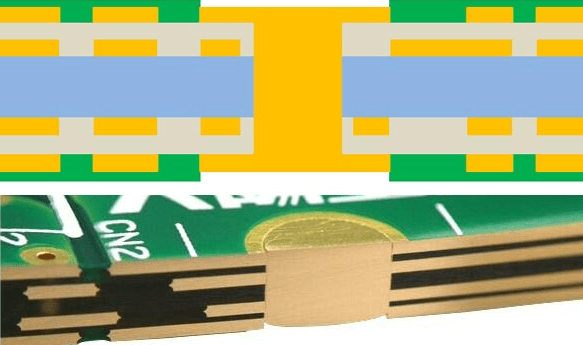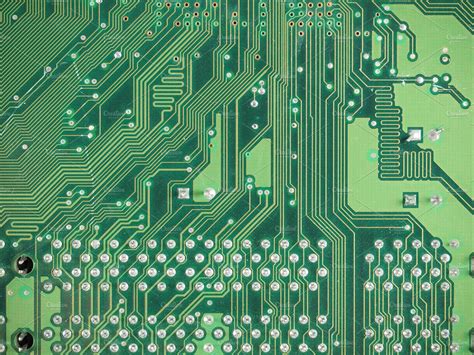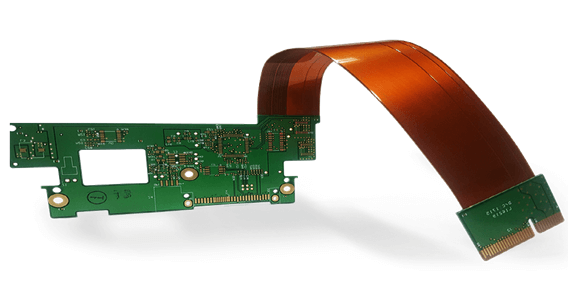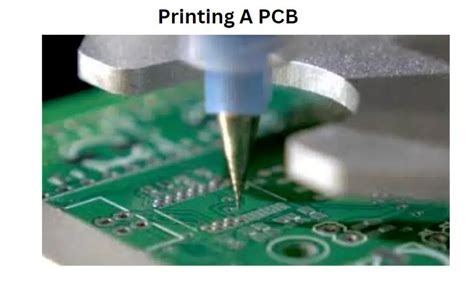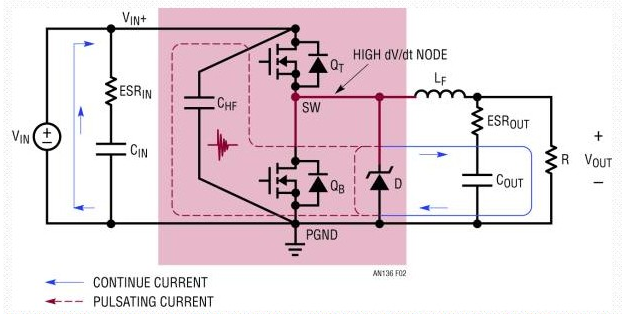Rogers flex pcb
Advantages Of Using Rogers Flex PCB In Modern Electronics
Rogers flex PCBs, or flexible printed circuit boards, have become increasingly prominent in modern electronics due to their numerous advantages over traditional rigid PCBs. These advanced materials offer a range of benefits that cater to the evolving demands of contemporary electronic devices, making them an essential component in various applications.
One of the primary advantages of Rogers flex PCBs is their exceptional flexibility.
Unlike rigid PCBs, which are limited by their inflexible nature, Rogers flex PCBs can be bent, folded, and twisted without compromising their functionality. This flexibility allows for more innovative and compact designs, enabling manufacturers to create smaller, lighter, and more efficient electronic devices. Consequently, this adaptability is particularly beneficial in applications where space is at a premium, such as in wearable technology, medical devices, and aerospace systems.
In addition to their flexibility, Rogers flex PCBs are known for their excellent thermal management properties.
Effective heat dissipation is crucial in high-performance electronic devices to prevent overheating and ensure reliable operation. Rogers flex PCBs are designed to handle higher temperatures and provide superior thermal conductivity compared to traditional materials. This capability not only enhances the performance and longevity of electronic components but also reduces the risk of thermal-related failures. Furthermore, the use of Rogers flex PCBs can lead to significant cost savings in the long run. Their durability and resistance to mechanical stress mean that devices incorporating these materials are less likely to experience damage or require frequent repairs. This reliability translates to lower maintenance costs and increased product lifespan, which is particularly advantageous for industries where downtime can be costly, such as in telecommunications and industrial automation.
Moreover, Rogers flex PCBs offer excellent electrical performance, which is essential for high-frequency applications.
These materials exhibit low dielectric constant and low loss tangent, ensuring minimal signal loss and high signal integrity. As a result, they are ideal for use in high-speed data transmission and RF (radio frequency) applications, where maintaining signal quality is paramount.
This characteristic makes Rogers flex PCBs a preferred choice for advanced communication systems, including 5G networks and satellite communications
. Another notable advantage of Rogers flex PCBs is their ability to reduce the overall weight of electronic devices. By eliminating the need for bulky connectors and wiring harnesses, these flexible circuits contribute to lighter and more streamlined designs. This weight reduction is particularly beneficial in applications where weight is a critical factor, such as in aerospace and automotive industries, where every gram counts towards improving fuel efficiency and performance.
Furthermore, the environmental benefits of Rogers flex PCBs should not be overlooked. The materials used in these PCBs are often more environmentally friendly compared to traditional options, contributing to the reduction of electronic waste. Additionally, their longer lifespan and reduced need for replacements further minimize the environmental impact, aligning with the growing emphasis on sustainability in the electronics industry. In conclusion, the advantages of using Rogers flex PCBs in modern electronics are manifold. Their flexibility, superior thermal management, cost-effectiveness, excellent electrical performance, weight reduction, and environmental benefits make them an indispensable component in the design and manufacture of cutting-edge electronic devices. As technology continues to advance, the adoption of Rogers flex PCBs is likely to increase, driving further innovation and efficiency in the electronics industry.

Design Considerations For Rogers Flex PCB Applications
When designing Rogers flex PCBs, several critical considerations must be taken into account to ensure optimal performance and reliability. Rogers Corporation is renowned for its high-frequency laminates, which are particularly advantageous in applications requiring superior signal integrity and minimal signal loss. However, the unique properties of Rogers materials necessitate a thorough understanding of their characteristics and the specific requirements of flexible circuit design.
First and foremost, material selection is paramount.
Rogers offers a variety of laminates, each with distinct dielectric properties, thermal stability, and mechanical flexibility. Designers must carefully choose the appropriate material based on the application’s frequency requirements, environmental conditions, and mechanical stress factors. For instance, Rogers 3000 series laminates are often preferred for high-frequency applications due to their low dielectric constant and low loss tangent, which contribute to excellent signal integrity.
Transitioning to the layout design, it is essential to consider the bend radius of the flex PCB. Unlike rigid PCBs, flex circuits are designed to bend and flex during operation.
Therefore, maintaining an adequate bend radius is crucial to prevent mechanical stress and potential damage to the conductive traces. A general rule of thumb is to keep the bend radius at least ten times the thickness of the flex circuit. This precaution helps to distribute mechanical stress evenly and prolong the lifespan of the PCB.
Moreover, trace routing requires meticulous attention.
In high-frequency applications, signal integrity can be significantly affected by the layout of the traces. To mitigate signal loss and crosstalk, designers should employ controlled impedance techniques and maintain consistent trace widths and spacing. Additionally, the use of ground planes and proper shielding can further enhance signal integrity by reducing electromagnetic interference (EMI).
Thermal management is another critical aspect of Rogers flex PCB design.
High-frequency applications often generate substantial heat, which can adversely affect the performance and reliability of the PCB. Rogers materials typically exhibit excellent thermal conductivity, but designers must still implement effective thermal management strategies. This may include the use of thermal vias, heat sinks, and proper ventilation to dissipate heat efficiently.
Furthermore, the choice of adhesives and coverlays plays a significant role in the overall performance of the flex PCB.
The adhesive must be compatible with Rogers materials and capable of withstanding the thermal and mechanical stresses encountered during operation. Similarly, the coverlay material should provide adequate protection to the conductive traces while maintaining flexibility. Polyimide is a common choice for coverlays due to its excellent thermal and mechanical properties.
In addition to these considerations, it is imperative to conduct thorough testing and validation of the flex PCB design.
This includes electrical testing to verify signal integrity, mechanical testing to assess flexibility and durability, and thermal testing to ensure effective heat dissipation. By rigorously testing the design, potential issues can be identified and addressed before mass production, thereby reducing the risk of failures in the field.
In conclusion, designing Rogers flex PCBs requires a comprehensive understanding of the material properties and the specific demands of flexible circuit applications. By carefully selecting materials, optimizing layout design, managing thermal performance, and conducting thorough testing, designers can create high-performance flex PCBs that meet the stringent requirements of modern electronic applications. The unique advantages of Rogers materials, combined with meticulous design practices, enable the development of reliable and efficient flexible circuits for a wide range of high-frequency applications.
Comparing Rogers Flex PCB To Traditional Rigid PCBs
Rogers flex PCBs, or flexible printed circuit boards, have emerged as a significant advancement in the field of electronics, offering distinct advantages over traditional rigid PCBs. To understand the benefits and applications of Rogers flex PCBs, it is essential to compare them with their rigid counterparts, examining aspects such as material properties, design flexibility, durability, and application suitability.
One of the primary differences between Rogers flex PCBs and traditional rigid PCBs lies in the materials used.
Rogers flex PCBs are constructed using flexible substrates, such as polyimide or polyester films, which allow the circuit board to bend and conform to various shapes. In contrast, rigid PCBs are typically made from fiberglass-reinforced epoxy laminates, which provide a sturdy and inflexible structure. This fundamental difference in material composition directly impacts the design flexibility and application range of each type of PCB.
The flexibility of Rogers flex PCBs offers a significant advantage in terms of design versatility.
These PCBs can be bent, folded, and twisted to fit into compact and irregularly shaped spaces, making them ideal for applications where space constraints are a critical consideration. For instance, in modern consumer electronics such as smartphones, wearable devices, and medical implants, the ability to incorporate flexible circuits allows for more compact and lightweight designs. On the other hand, traditional rigid PCBs are limited to flat, planar configurations, which can restrict their use in such space-constrained environments.
Durability is another crucial factor where Rogers flex PCBs often outperform traditional rigid PCBs.
The flexible nature of these PCBs enables them to withstand mechanical stresses, such as bending and vibration, without sustaining damage. This resilience makes them particularly suitable for applications in automotive, aerospace, and industrial sectors, where electronic components are frequently subjected to harsh conditions. Conversely, rigid PCBs are more prone to cracking and breaking under mechanical stress, which can lead to reliability issues in demanding environments.
Moreover, the thermal management capabilities of Rogers flex PCBs are noteworthy.
The materials used in these PCBs typically exhibit excellent thermal stability, allowing them to operate efficiently at higher temperatures. This characteristic is particularly beneficial in applications where heat dissipation is a concern, such as in high-performance computing and power electronics. Traditional rigid PCBs, while also capable of handling thermal loads, may not offer the same level of flexibility in managing heat dissipation due to their rigid structure.
In terms of manufacturing and assembly, Rogers flex PCBs present both opportunities and challenges.
The production process for flexible PCBs can be more complex and costly compared to rigid PCBs, primarily due to the need for specialized equipment and techniques to handle the flexible materials. However, advancements in manufacturing technologies are gradually reducing these barriers, making flexible PCBs more accessible and cost-effective. Additionally, the ability to integrate multiple layers and components into a single flexible PCB can streamline assembly processes and reduce the overall weight and size of electronic devices.
In conclusion, while traditional rigid PCBs continue to play a vital role in various electronic applications, Rogers flex PCBs offer distinct advantages that make them an attractive alternative in specific scenarios. Their superior design flexibility, durability, and thermal management capabilities position them as a valuable solution for modern electronic devices that demand compactness, reliability, and performance. As technology continues to evolve, the adoption of Rogers flex PCBs is likely to increase, driven by the growing need for innovative and adaptable electronic solutions.

Innovations In Rogers Flex PCB Materials And Manufacturing Techniques
Rogers flex PCBs, or flexible printed circuit boards, have become a cornerstone in the advancement of modern electronics, offering unparalleled versatility and performance. These innovative materials and manufacturing techniques have revolutionized the way electronic devices are designed and produced, enabling more compact, lightweight, and reliable products. The continuous evolution in Rogers flex PCB materials and manufacturing techniques has been driven by the increasing demand for high-performance electronic devices in various industries, including telecommunications, automotive, aerospace, and medical devices.
One of the key innovations in Rogers flex PCB materials is the development of high-frequency laminates.
These laminates are designed to provide superior electrical performance, particularly in high-frequency applications. They offer low dielectric constant and low loss tangent, which are critical for maintaining signal integrity and reducing signal loss. This is particularly important in applications such as 5G communications, where high-frequency signals are used to achieve faster data transmission rates. The use of high-frequency laminates in Rogers flex PCBs ensures that these devices can meet the stringent performance requirements of modern communication systems.
In addition to high-frequency laminates, Rogers flex PCBs also benefit from the use of advanced adhesive materials.
These adhesives are designed to provide strong bonding between the different layers of the PCB, ensuring mechanical stability and reliability. They also offer excellent thermal and chemical resistance, which is essential for maintaining the performance of the PCB in harsh operating environments. The use of advanced adhesives in Rogers flex PCBs helps to enhance their durability and longevity, making them suitable for a wide range of applications.
Another significant innovation in Rogers flex PCB manufacturing techniques is the use of laser direct structuring (LDS) technology.
This technology allows for the precise and efficient creation of complex circuit patterns on flexible substrates. By using a laser to directly write the circuit pattern onto the substrate, LDS technology eliminates the need for traditional photolithography processes, which can be time-consuming and costly. This not only speeds up the manufacturing process but also allows for greater design flexibility and the creation of more intricate and compact circuit designs. The adoption of LDS technology in Rogers flex PCB manufacturing has enabled the production of highly sophisticated electronic devices with enhanced performance and functionality.
Furthermore, advancements in roll-to-roll (R2R) manufacturing techniques have also played a crucial role in the development of Rogers flex PCBs.
R2R manufacturing involves the continuous processing of flexible substrates on a roll, allowing for high-volume production of flex PCBs. This technique offers several advantages, including reduced production costs, increased throughput, and improved consistency and quality of the final product. The implementation of R2R manufacturing techniques in Rogers flex PCB production has made it possible to meet the growing demand for these advanced materials in various industries.
In conclusion, the innovations in Rogers flex PCB materials and manufacturing techniques have significantly contributed to the advancement of modern electronics. The development of high-frequency laminates, advanced adhesive materials, laser direct structuring technology, and roll-to-roll manufacturing techniques has enabled the production of high-performance, reliable, and compact electronic devices. As the demand for sophisticated electronic devices continues to grow, further advancements in Rogers flex PCB materials and manufacturing techniques are expected to drive the next wave of innovation in the electronics industry.

